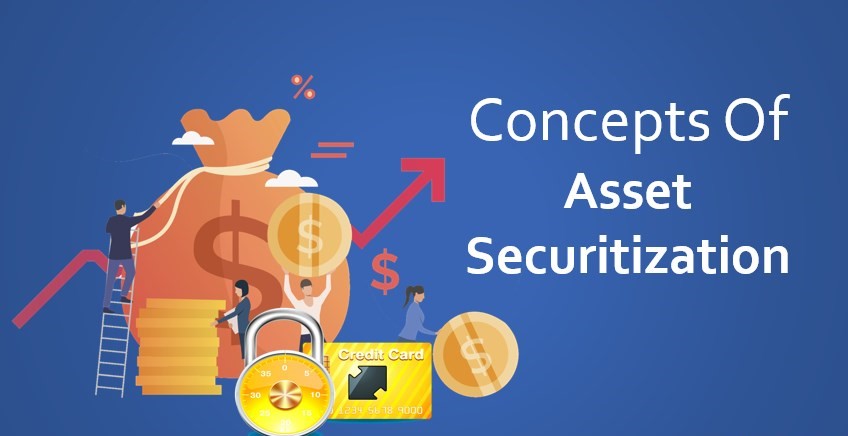Introduction
Illiquid refers to the state of a stock, bond, or other assets that cannot easily and readily be sold or exchanged for cash without a substantial loss in value. In short, these are assets that are not easily marketable. The concept of securitization has seemed to have resolved this issue. No wonder the concept comes with its own pros and cons but surely it caught the eye of many financial institutions as soon as it was launched, as they were quick enough to jump in on the opportunity.
Securitization simply means conversion of an asset, especially a loan into marketable securities, typically for the purpose of raising cash by selling them. These assets can be automobile loans, credit card receivables, residential mortgages or any other form of future receivables.
Mechanism of Securitization
The process of securitization involves a series of steps to be followed explained below:
Step 1- Creation of Pool of Assets- Segregation can be called as the first step. Simply, it involves identification of similar types of mortgages. This can be in terms of interest rate, maturity and concentration of units and creating a pool of all such assets.
Step 2- Transfer to SPV- Assuming that a Special Purpose Vehicle has already been created; all such pooled assets are transferred to the SPV.
SPV can be defined as a special-purpose entity is a legal entity created to fulfill narrow, specific or temporary objectives. SPEs are typically used by companies to isolate the firm from financial risk. A formal definition is “The Special Purpose Entity is a fenced organization having limited predefined purposes and a legal personality”
Step 3- Sale of securitized paper- SPV then designs these instruments based on interest, risk, tenure etc. based on pool of assets. These instruments can be Pass Through Security or Pay Through Certificates.
In case of a PTC instrument originator (seller of the assets) transfers the entire receipt of cash in the form of interest or principal repayment from the assets sold. Thus, these securities represent direct claim of the investors on all the assets that has been securitized through SPV.
Since in PTCs all cash flows are passed to the performance of the securitized assets, in order to overcome this limitation PTS came into picture. In case of Pass Through Security, SPV debt securities are backed by the assets and hence it can restructure different tranches from varying maturities of receivables. Further, it allows reinvestment of surplus funds for short term by the SPV.
Step 4- Administration of Assets- The administration of assets in subcontracted back to originator which collects principal and interest from underlying assets and transfer it to SPV, which works as a conduct.
Step 5- Recourse to Originator- Performance of the securitized paper primarily depends upon the performance of the underlying assets. For example, in case of a MBS product, the value of the instrument would vary depending upon the value and cash flow generating ability of such mortgages. Along with that, in case otherwise provided in times of default, they go back to the originator from the SPV.
The Originator is the entity that assigns assets or risks in a securitization transaction. Usually it is the party (lender) who originally underwrote and securitized the claims (loans).
Step 6- Repayment of Funds- Finally the return to the investor is received in the form of interest and principal repayments by the SPV earned from the assets pooled together.
Another type of securitized instrument other than those discussed above is Stripped Securities. This is created by dividing the cash flows associated with underlying securities into two or more new securities. These are as follows:
- Interest Only (IO) Securities
- Principal Only (PO) Securities
As the name suggests, the holder of IO Securities receives only interest while PO Security holder receives only the principal amount. Being highly volatile in nature these are not very popular among the investors.

Howdy I am so excited I found your blog page, I really found you by error, while I was browsing on Askjeeve
for something else, Anyhow I am here now and
would just like to say thanks a lot for a marvelous post and a all round
thrilling blog (I also love the theme/design), I don’t have time to go through
it all at the moment but I have book-marked it and also added your RSS feeds, so when I have time I will be
back to read a great deal more, Please do keep up the
great job.